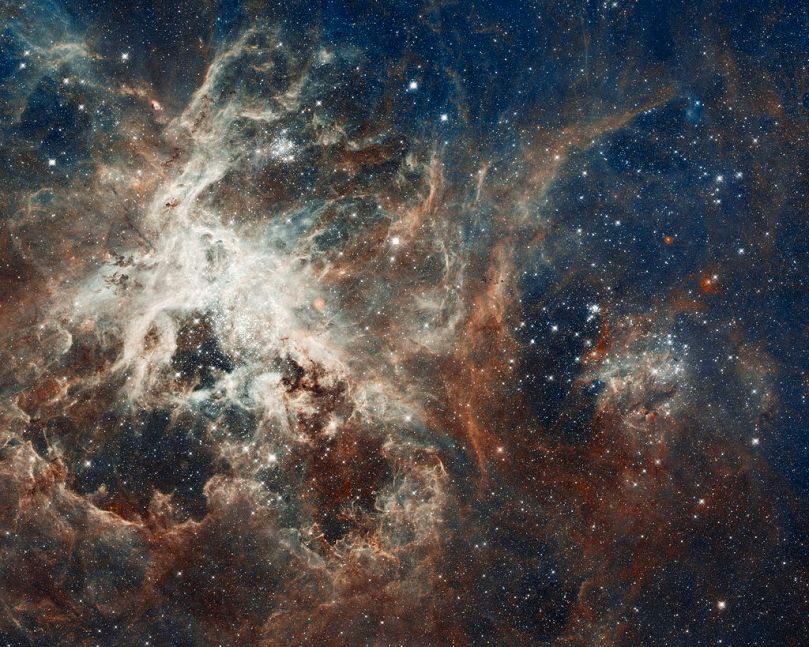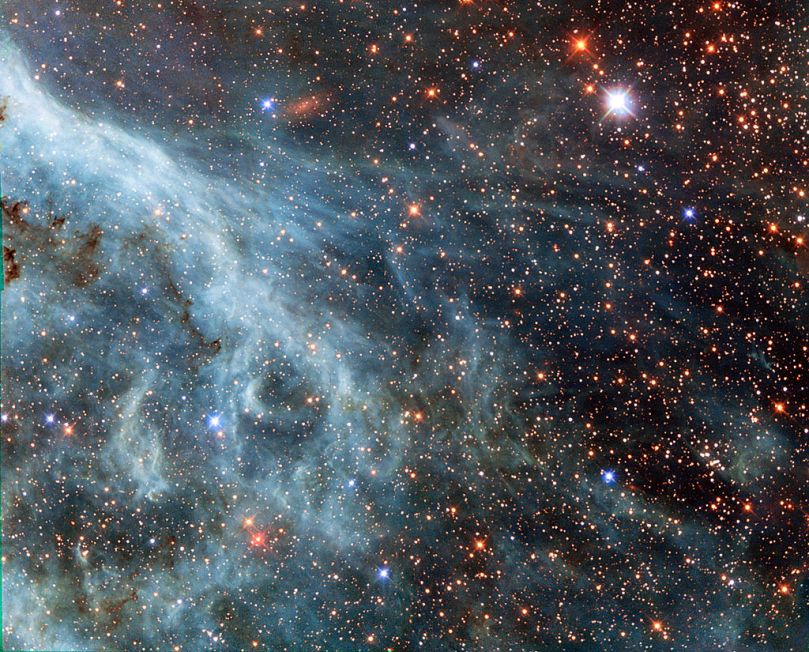 I’ve just finished a story about gas and galaxies. You’re bored already, aren’t you. After I’d sent the editor a query about it, he took months to respond and then wanted several rewrites of the query; I think he was bored too. If gas and galaxies are so boring, why did I want so much to write about them, what was so interesting? Unfortunately I don’t usually figure that out until after I’ve written the story. But now the story is finished so I know what I think is interesting and unfortunately again, it didn’t make it into the story.
I’ve just finished a story about gas and galaxies. You’re bored already, aren’t you. After I’d sent the editor a query about it, he took months to respond and then wanted several rewrites of the query; I think he was bored too. If gas and galaxies are so boring, why did I want so much to write about them, what was so interesting? Unfortunately I don’t usually figure that out until after I’ve written the story. But now the story is finished so I know what I think is interesting and unfortunately again, it didn’t make it into the story.
 So here it is: galactic respiration. This dawned on me while I was sitting in a talk about an old problem: why some galaxies are blue and alive with new stars, and why other galaxies are red, their stars burning out. Blue and red galaxies aren’t different kinds of galaxies; they’re galaxies at different stages of life, youth and old age. Underneath the talk was the problem with that: nobody knows exactly what turns a galaxy from blue to red, from youth to death. (Also: it happens fast; the galaxies astronomer see are either alive or dying, not much in between.) So how do galaxies die?
So here it is: galactic respiration. This dawned on me while I was sitting in a talk about an old problem: why some galaxies are blue and alive with new stars, and why other galaxies are red, their stars burning out. Blue and red galaxies aren’t different kinds of galaxies; they’re galaxies at different stages of life, youth and old age. Underneath the talk was the problem with that: nobody knows exactly what turns a galaxy from blue to red, from youth to death. (Also: it happens fast; the galaxies astronomer see are either alive or dying, not much in between.) So how do galaxies die?
The talk didn’t have the answer, except to say what I’ve been hearing all along, that the answer was in the gas. Astronomers finally, only recently, got their hands on instruments that can sensitively detect gas. Gas roils around inside galaxies, forming new stars; it blows out of galaxies for its own hot reasons; it hangs around outside the galaxies, cools off, and falls back in to form more stars, then blows back out again, in, out, over and over. It’s like the galaxy is breathing.
This is sheerest anthropomorphism, which is a bad word among scientists. They don’t like it – neither did my editor — because it describes in human terms, something that should be described in its own terms. Thinking anthropomorphically, you’ll probably miss what the thing – the galaxy, the virus, the moving magma – is actually, truly doing.
That’s not wrong but I think it’s also not the whole story. Prime example: the satellite Rosetta drove along in empty space alone for ten years, then saw a comet and circled it, and let down Philae, a little robot lander, to go explore the comet. And Philae tried, but it couldn’t quite do the highly improbable and ran out of energy and life. Before Philae went to sleep, it valiantly sent back wonders, things nobody knew or thought likely. Meanwhile, Rosetta is still following the comet faithfully and waiting to see if Philae re-energizes and re-awakens.
 That’s not me anthropomorphizing, that’s the European Space Agency (ESA) and 90 percent of my sciencey Twitter feed, all teary when Philae said goodby. That’s surely at some level the way the scientists of ESA saw it — they weren’t cheering only their own technical ingenuity, which was a success but not wholly. It’s also surely what got so many people caught up in what was, in plain fact, some excellent engineering to get data about another desert in space.
That’s not me anthropomorphizing, that’s the European Space Agency (ESA) and 90 percent of my sciencey Twitter feed, all teary when Philae said goodby. That’s surely at some level the way the scientists of ESA saw it — they weren’t cheering only their own technical ingenuity, which was a success but not wholly. It’s also surely what got so many people caught up in what was, in plain fact, some excellent engineering to get data about another desert in space.
Back at the talk, the gas turned out to be doing something weird around the red, dead galaxies. It had obviously flowed in and out for a while, but then it flowed out and didn’t flow back in. It just stayed out there – as one astronomer said, like somebody threw a ball up in the air and it didn’t come back down.
To repeat, weird; and that’s what I ended up writing the story about. But it was the breathing that got me — and breathing not anthropomorphically either, not in human terms but in its own terms. So what looks like anthropomorphism, the universe described in human terms, is really humans following the rules the universe follows. One of those rules is cycles — infalls and outflows, repeat repeat — that nourish some entity through time. Until sooner or later, somehow or other, the gas leaves the galaxy and doesn’t fall back in, and the stars burn up the remaining gas until it’s gone. When the galaxy can’t breathe any more, it dies.
That’s another of the universe’s rules: entities end. Humans, we’re so cosmopomorphic.
_______
Photos: I’m cheating a little. The comet-landing picture, the guy is crying because Philae touched down — but still. And in the astronomy pictures, the gas is inside the galaxy. Gas going in and out of galaxies is hard to take pictures of (i.e., astronomers use cameras on gas less often than they use spectroscopy); but the gas inside, keeping the stars alive, looks spectacular.
The first picture is the gas that’s fed 30 Doradus, in the Tarantula nebula: NASA, ESA, ESO, D. Lennon and E. Sabbi (ESA/STScI), J. Anderson, S. E. de Mink, R. van der Marel, T. Sohn, and N. Walborn (STScI), N. Bastian (Excellence Cluster, Munich), L. Bedin (INAF, Padua), E. Bressert (ESO), P. Crowther (Sheffield), A. de Koter (Amsterdam), C. Evans (UKATC/STFC, Edinburgh), A. Herrero (IAC, Tenerife), N. Langer (AifA, Bonn), I. Platais (JHU) and H. Sana (Amsterdam). The second picture is ESA/J.Mai and is called We Did It. The third picture is the gas on that same nebula’s edges: ESA/Hubble & NASA , Josh Barrington . Both astronomy pictures are via Wikimedia.
I have scrolled up and down repeatedly. I see 2 star pictures and one guy crying. But the notes seem to refer to 3 star pix. I like the author’s work and would like to understand her pictorial references.
I’m very tired and my brain isn’t operating well. But I can’t see that the notes refer to three star pictures. Two pictures of gas/stars, one picture of a weeping ESA guy. However, you’re kind to offer the compliment.
Humans. I imagine a great, cosmic sigh.
Great piece.
Ann, the last paragraph (of the 2 following the article) mentions the first, second and third pictures, although it does finish with a sentence claiming “both” from Wikimedia.
Embarrassing to admit, but though I’m in my 4th decade, I only found out this year that the “space” in Hubble Space Telescope was because it was in space! I had a wonderful time finding that out though as my daughter’s Scout group toured the Observatory in the Perth Hills in Western Australia – magical.
WA_side, I think I fixed that problem now. You’re right, it was confusing and I hadn’t seen it. As to your 4th decade epiphanies: you’ll sympathize with Cassie https://www.lastwordonnothing.com/2013/06/24/embracing-my-hubble-moments/